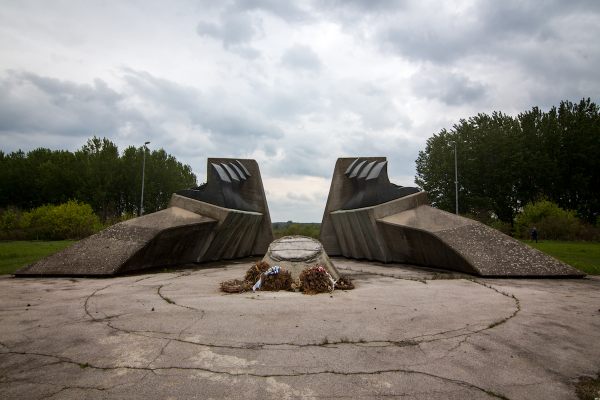About
Surrounded by the picturesque forests of Alsace sprawls a sinister leftover of the Nazi occupation of France, the Natzweiler-Struthof concentration camp. Prior to the arrival of Nazi occupying forces, this area was commonly used by local Alsatian people as a popular spot for picnics during summer and in winter such activities as skiing and sledging, however, the German invasion of France put an end to all that.
The geology of the area had been identified as being of great strategic interest to the Nazis even before their invasion of France, due to the pink granite that could be mined there. (This type of granite was a favored building material of the edifices and monuments of the Nazi period).
The remoteness of this site had also been recognized as an "ideal location" for a concentration camp. In 1941, after the invasion and occupation of France, Natzweiler-Struthof was constructed on the personal orders of Heinrich Himmler, the head of the SS.
Natzweiler-Struthof was a camp used primarily for the internment of political opponents of the Nazi regime in the German-occupied territories of Western Europe such as captured French, Dutch, Belgian and Scandinavian resistance fighters. It was also to be the final destination of British spies and agents of the S.O.E. who had been captured and interrogated.
Such prisoners were classified by the Nazis as being "Nacht und Nebel" ("Night and Fog"), because upon arrest by the Gestapo or SS they would be sent directly to a concentration camp (thus "vanishing into night and fog") without their families having ever being informed of their whereabouts. These measures were intended by the Nazis to prevent resistance figures from being made into "martyrs" and to discourage popular support for resistance, which they greatly feared.
Prisoners sent to Natzweiler-Struthof camp would either be immediately executed or worked to death slowly through starvation over an extended period in which they were forced to produce war munitions or to labor in the mining of granite, which would then be sent by rail back to Germany.
As the Nazis began to face defeat and the Allied forces pushed eastward into the Alsace region, the camps were largely abandoned. Prisoners were evacuated and sent on a death march into Germany to the larger camps of Auchswitz and Dachau.
From 1941 to 1944. approximately 52,000 prisoners ended up in Natzweiler-Struthof camp. Some 22,000 met their deaths here, including the famous French resistance leaders Andree Borrell and Charles Delestraint and S.O.E agents such as Vera Leigh, Diana Rowden, and Sonia Olschanezky.
A famous survivor of the camp was the Slovenian writer Boris Pahor who wrote poignantly of his experiences as a prisoner at Natzweiler-Struthof in his moving autobiographical novel Necropolis, published in 1967.
Related Tags
Know Before You Go
The site is open to visitors from 9 am to 7 pm daily and entrance is free of charge.
Though visits are self-guided there are information panels for the visitor that explain the history of the Natzweiler-Struthof concentration camp in French, English and German.
It is extremely important that visitors show respectful and appropriate behaviour as befits a visit to such a site and that honours the memory of the victims of the camps.
Published
November 16, 2021























































